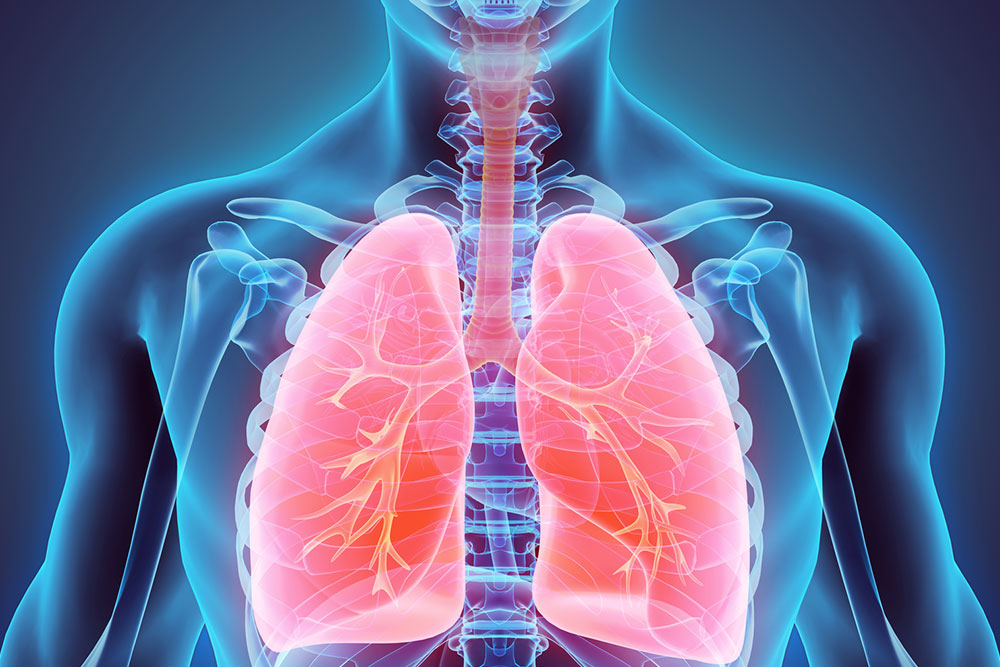Non-Small Cell Lung Cancer – Causes, Symptoms, and Treatment
Non-small cell lung cancer or non-small cell lung carcinoma is the most prevalent type of lung cancer. There are mainly two types of lung cancers, which are non-small cell lung cancer (NSCLC) and small cell lung cancer. Lung carcinoma is a condition in which the lung cells become abnormal, as a result, grow out of control.

Prevalence and causes of non-small cell lung cancer
Among the lung cancer cases in the country, almost 80-85% are of non-small cell lung cancer type, and only about 10-15% is of the small lung cancer type. The symptoms and treatment for these two types of lung cancer vary. There are many subtypes of NSCLC, namely, adenocarcinoma, squamous cell carcinoma, large cell carcinoma, and sarcomatoid carcinoma.
The NSCLC type is a serious condition that cannot be reversed but prevented from getting worse. Majority of those affected by this type of lung cancer are smokers or have been exposed to smoke. Exposure to radon, asbestos, air pollution, metal or mineral dust, or radiation is likely to cause this disease.
Symptoms of non-small cell lung cancer
It is difficult to detect this disease during the early stages because the symptoms are not easily detectable. Often, the symptoms are confused with those of other illnesses like pneumonia or collapsed lung. However, common symptoms of NSCLC are as follows:
- A cough that worsens or a persistent cough : Continuous bouts of a cough or coughing symptoms that worsen with time may be a symptom of NSCLC. This type of cough may not be associated with a recent spell of cold or flu or other infections.
- Chest pain : Another classic symptom that is often confused with other diseases. Chest pain due to NSCLC may increase with cough or when one takes deep breaths. However, people suffering from pneumonia or asthma or bronchitis also experience similar symptoms.
- Changes in voice : The voice may suddenly turn raspy or hoarse due to NSCLC. People often mistake these symptoms like that of a sore throat. Changes in voice may or may not be associated with pain.
- Breathing difficulty : Since cancer affects the lungs, one may experience pain or discomfort while breathing. One’s breathing may become heavy and require tremendous effort.
- Noisy breathing : Sharp, raspy sounds may be produced while breathing due to the damage to the lungs.
- Wheezing : Wheezing is caused due to constriction of bronchioles of the lungs. The cancer cell growth damages the lungs causing wheezing and other breathing problems. Shortness of breath is also another symptom to watch out for in NSCLC.
- Loss of appetite : People affected by NSCLC may experience a sudden loss of appetite.
- Sudden weight loss : Sudden, unexplained weight loss is another symptom of NSCLC.
- Fatigue and weakness : Due to damage to the lungs, breathing requires a lot of effort. This often leaves people fatigued and weak. Even routine activities may be very difficult to perform.
- Prolonged lung diseases like pneumonia or bronchitis : Lung diseases like pneumonia or bronchitis may take a very long time to heal for people affected with NSCLC. Despite medication, these diseases may not heal when a person is affected by lung cancer.
When cancer spreads to other parts of the body, one may experience other symptoms like a headache, bone pain, dizziness, yellow skin or eyes, and numbness of limbs.
Diagnosis and treatment
Routine diagnosis of NSCLC includes physical evaluation, evaluation of medical and family history, and evaluation of symptoms. Imaging tests like X-Rays, MRI, CT, and PET Scans help in gauging the extent to which cancer has spread. Sputum cytology is a conclusive diagnostic test that checks for the presence of cancer cells in the sputum one coughs up. Fine-needle aspiration biopsy is a method that takes a sample of abnormal growth in the lungs. There are other invasive diagnostic tests that confirm the stage of non-small cell lung cancer and the extent to which it has spread to other parts of the body.
Treatment for NSCLC is a two-pronged approach; first is to target the cancer cells, the second is to address the symptoms. The line of treatment depends on the stage of cancer and the extent to which it has spread. Surgery is performed to remove cancerous cells in early stages of cancer. Radiation and chemotherapy kill the cancer cells that cannot be removed through surgery. Other methods like targeted therapy and laser photodynamic therapy are other methods for destroying cancer cells at targeted locations.
Since common symptoms of non-small cell lung cancer can be confused with other lung diseases, it is important to be vigilant in observing symptoms and reporting them to the physician.











